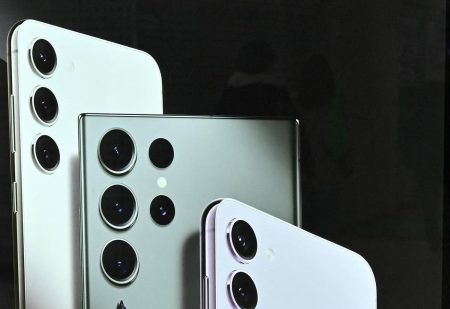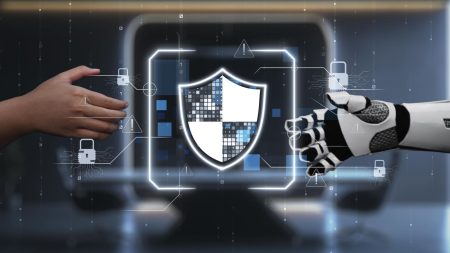As COVID-19 recedes and the warmth of summer unfolds, travel has once again become a common activity for many of us. Devices like notebooks, tablets, and phones have become integral tools for both leisure and business travel. Yet, having immediate access to abundant data on the go comes with its risks, potentially exposing personal and business files. Additionally, devices that remain connected or keep sessions open to business networks could potentially compromise the entire corporate system. Here are some strategies you can implement to bolster the cybersecurity of your devices when traveling.
Selecting the Right Laptop Bag
It is essential to always store your laptop in a robust, sturdy bag explicitly designed for carrying laptops. The laptop sleeve should be well-padded for protection. Backpacks with dedicated laptop compartments can be particularly convenient. Opting for TSA-approved bags is highly recommended. Additionally, the bag should be both collapsible and expandable to adjust according to its contents and should be comfortable to carry on long trips.
Applying Parental Instincts for Device Security
Consider your laptop as valuable as a child. In public places, you would not leave a child unattended – you should apply the same principle to your computer. Always have it within your sight, even when you are just moving around. If you need to use a restroom or step away for a moment, take it with you or secure it safely before you go. Avoid leaving it in a car, and never check it with your luggage at the airport.
Hotel Room Protocol
If you ever need to leave your laptop behind in your hotel room, take steps to ensure its safety. First, make use of the ‘Do Not Disturb’ sign. Limiting the number of people entering your room minimizes the chances of your laptop disappearing. If your device is compact enough, consider using the hotel safe. However, remember that it is not foolproof, so try to minimize the time your laptop spends unattended.
The Importance of Cable Locks
While a determined thief might not be dissuaded by a safety lock on your device if they are alone and unobserved, a lock can provide a formidable deterrent in busier settings where a quick getaway is crucial. Consider investing in a cable lock for your laptop – it is a physical barrier that can discourage opportunistic thieves and slow down more determined ones. Research different models online, paying attention to reviews and product details. Choose one that is sturdy, reliable, and matches your device’s specifications. Remember, adding layers of security can be the difference between retaining and losing your valuable device during travel.
Retrieving Lost Devices
If your laptop is lost or stolen, specific software programs can help locate it. These include anti-theft tracking services, which are often provided by the device manufacturer or third-party security firms. These services use GPS technology to track your device’s location. Some even allow you to remotely lock your device or wipe sensitive data to protect your information. Before you embark on your journey, consider subscribing to such a service. Keep all necessary contact information and subscription details handy, as timely action can be crucial in retrieving your device.
Establishing Boundaries: Why Your Laptop Is Not for Sharing
While it is generally good to be friendly, it is crucial to draw a line when it comes to your personal devices. No matter how trustworthy a stranger may seem, it is best not to let them use your device. Allowing a stranger access could lead to potential data theft or, in the worst case, physical theft of the device. They might also unintentionally download malware or access unsecured networks that can compromise your cybersecurity. If someone urgently needs to use a computer, consider directing them to a public facility like a library or an internet café.
Tips for Secure Power-Ups
Public charging stations, while convenient, can be a hotbed for cybercriminal activities. Data thieves can use these stations to steal data or inject malware. If you find yourself needing to use a public charging port, consider using a USB data blocker, also known as a USB condom. This device allows your phone to charge without exposing data transfer pins, thus preventing unwanted data access. Consider carrying a portable battery pack with you for an extra layer of protection.
Managing Wi-Fi and Bluetooth Connectivity
Disable automatic Wi-Fi and Bluetooth connectivity when you are not using them. This precautionary step mitigates the risk of inadvertently joining malicious or compromised networks that could compromise your data security. It is advisable to manually select and connect to trusted networks only.
Passwords and Biometrics
Make sure strong, unique passwords safeguard your devices. Better yet, use biometric security features, such as fingerprint or facial recognition, if your device supports it. These provide an added layer of security and are difficult for thieves to bypass. Furthermore, activate auto-lock settings on your devices so they lock themselves after a brief period of inactivity.
MFA
Multi-Factor Authentication (MFA) can provide a significant boost to your account security. It is advisable to enable MFA on all your accounts where it is available. Rather than relying solely on your password, MFA requires an additional form of verification. This could be a text message sent to your phone, an email to your inbox, a biometric feature like a fingerprint, or an authenticator app’s randomly generated code. This extra step makes it much harder for cybercrooks to access your accounts, even if they have your password.
Encryption Is Your Data’s Best Friend
Ensuring your sensitive data is encrypted is essential to securing your device. Encryption transforms your readable data into an unreadable format, decipherable only with a specific key. So, even if someone manages to gain unauthorized access to your device, they cannot comprehend your data without this key. Numerous tools and software can assist you with this task, often built into your device’s operating system.
Backups
Securing your important data does not just involve protecting it from unauthorized access but also ensuring you have a backup in case of loss or damage to your device. Establish a regular backup routine, copying your essential files to a secure, separate location. This could be an external hard drive, a network-attached storage (NAS) device, or a cloud storage service. Many devices and operating systems come with integrated backup solutions, making the process easier. Doing so will ensure that if the worst happens – such as a lost, stolen, or damaged device – you will not lose the information that matters most to you.
Virtual Private Networks
Harnessing the power of a Virtual Private Network (VPN) can significantly bolster your online security, especially when accessing public Wi-Fi networks prevalent at airports, hotels, or coffee shops. A VPN establishes a secure, encrypted tunnel for your data to traverse, shielding it from potential eavesdroppers or malicious actors. Using a VPN protects your sensitive information, such as login credentials or financial transactions, from being intercepted.
Mindful Online Sharing
Exercise caution when sharing information online, especially regarding travel plans or location. Revealing such details can make you a target for individuals with malicious intent, including those who may seek to steal your devices. Avoid broadcasting your specific travel dates, itineraries, or exact whereabouts in real time.
Conclusion
According to the Guide to Europe, cyberattacks on travelers are once again increasing in frequency. This serves as a reminder of the importance of prioritizing cybersecurity while on the go. Travelers should remain vigilant and take proactive measures to protect their digital devices and data. Staying informed of current threats and regularly updating security measures will help ensure a safe and secure digital experience while traveling.
Read the full article here









